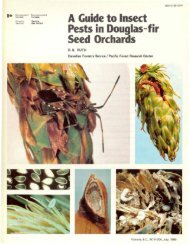A spatial, climate-determined risk rating for Scleroderris disease of ...
A spatial, climate-determined risk rating for Scleroderris disease of ...
A spatial, climate-determined risk rating for Scleroderris disease of ...
Create successful ePaper yourself
Turn your PDF publications into a flip-book with our unique Google optimized e-Paper software.
Venier et al. 1401<br />
Fig. 1. (a) The <strong>spatial</strong> distribution <strong>of</strong> observations (presence and absence) <strong>of</strong> <strong>Scleroderris</strong> <strong>disease</strong> in Ontario (n = 1139). (b) Spatial<br />
prediction <strong>of</strong> the probability <strong>of</strong> <strong>Scleroderris</strong> occurrence based on a logistic regression model with precipitation in the coldest quarter<br />
and temperature <strong>of</strong> the coldest quarter as explanatory variables.<br />
contribute much to increased classification accuracy. There<br />
was a large loss in concordance <strong>for</strong> models with only one <strong>of</strong><br />
either mean temperature in the coldest quarter or precipitation<br />
in the coldest quarter (Table 2).<br />
We chose the two-variable model as our final model because<br />
<strong>of</strong> its relatively high concordance and its relative simplicity.<br />
According to the model, <strong>Scleroderris</strong> <strong>disease</strong> is more<br />
likely to be found at lower winter temperatures (Fig. 2a) and<br />
in places with more winter precipitation (Fig. 2b). The classification<br />
accuracy <strong>of</strong> the test data based on models built<br />
from half <strong>of</strong> the original data was the same as the original<br />
classification accuracy <strong>of</strong> the model. This result suggests<br />
that the model based on these two explanatory variables is<br />
very stable. Also, the standard deviation <strong>of</strong> the classification<br />
diagnostics <strong>for</strong> the 10 test runs was very low (Table 3) indicating<br />
that the results were not dependent on any single set<br />
<strong>of</strong> observations in the data.<br />
Based on the results <strong>of</strong> this study, we conclude that there<br />
are strong associations between the distribution <strong>of</strong> <strong>Scleroderris</strong><br />
<strong>disease</strong> in Ontario and mesoscaled <strong>climate</strong>. The classification<br />
accuracy <strong>of</strong> the 11 variable model suggests that we<br />
© 1998 NRC Canada


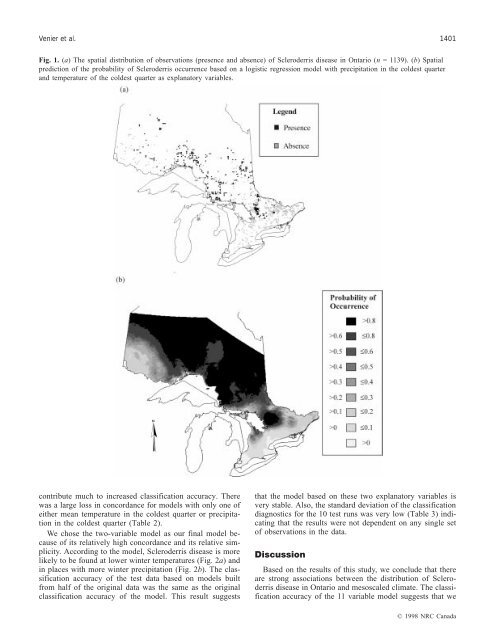
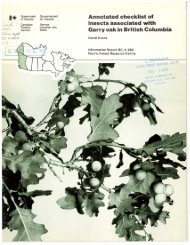
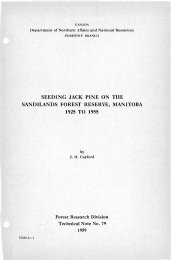
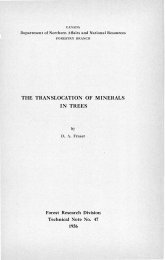
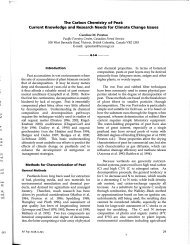



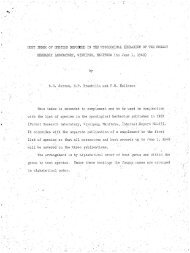

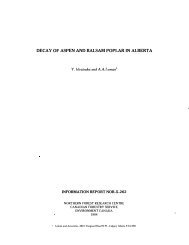
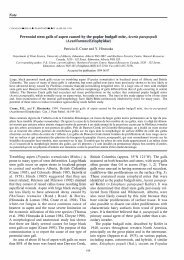
![Po],rell](https://img.yumpu.com/11946277/1/190x231/porell.jpg?quality=85)
